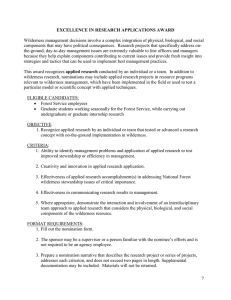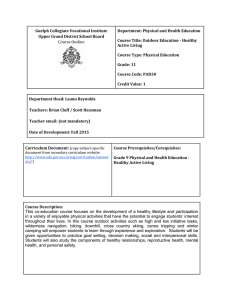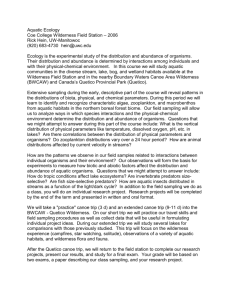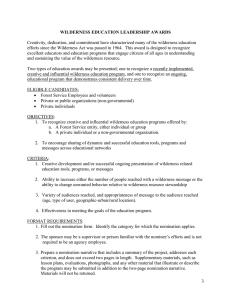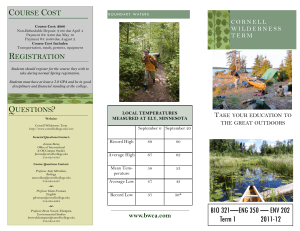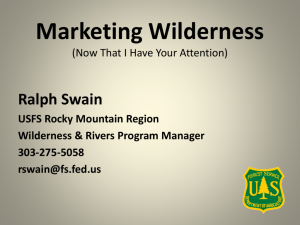Animal Behavior full course description
advertisement
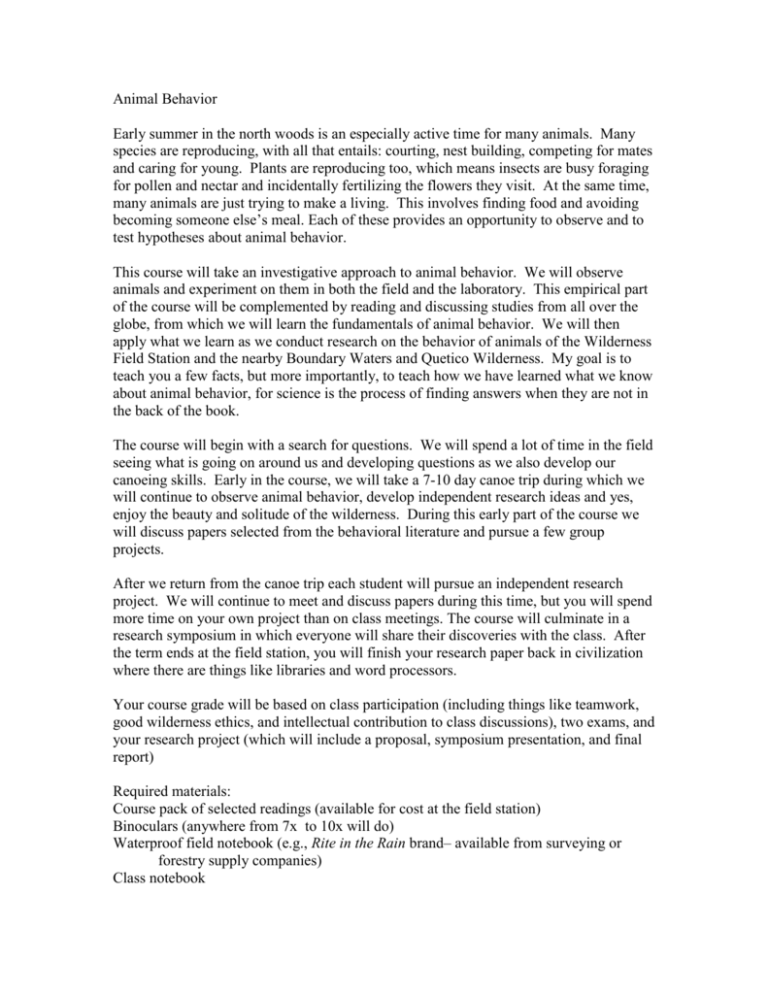
Animal Behavior Early summer in the north woods is an especially active time for many animals. Many species are reproducing, with all that entails: courting, nest building, competing for mates and caring for young. Plants are reproducing too, which means insects are busy foraging for pollen and nectar and incidentally fertilizing the flowers they visit. At the same time, many animals are just trying to make a living. This involves finding food and avoiding becoming someone else’s meal. Each of these provides an opportunity to observe and to test hypotheses about animal behavior. This course will take an investigative approach to animal behavior. We will observe animals and experiment on them in both the field and the laboratory. This empirical part of the course will be complemented by reading and discussing studies from all over the globe, from which we will learn the fundamentals of animal behavior. We will then apply what we learn as we conduct research on the behavior of animals of the Wilderness Field Station and the nearby Boundary Waters and Quetico Wilderness. My goal is to teach you a few facts, but more importantly, to teach how we have learned what we know about animal behavior, for science is the process of finding answers when they are not in the back of the book. The course will begin with a search for questions. We will spend a lot of time in the field seeing what is going on around us and developing questions as we also develop our canoeing skills. Early in the course, we will take a 7-10 day canoe trip during which we will continue to observe animal behavior, develop independent research ideas and yes, enjoy the beauty and solitude of the wilderness. During this early part of the course we will discuss papers selected from the behavioral literature and pursue a few group projects. After we return from the canoe trip each student will pursue an independent research project. We will continue to meet and discuss papers during this time, but you will spend more time on your own project than on class meetings. The course will culminate in a research symposium in which everyone will share their discoveries with the class. After the term ends at the field station, you will finish your research paper back in civilization where there are things like libraries and word processors. Your course grade will be based on class participation (including things like teamwork, good wilderness ethics, and intellectual contribution to class discussions), two exams, and your research project (which will include a proposal, symposium presentation, and final report) Required materials: Course pack of selected readings (available for cost at the field station) Binoculars (anywhere from 7x to 10x will do) Waterproof field notebook (e.g., Rite in the Rain brand– available from surveying or forestry supply companies) Class notebook Optional materials: Mask and snorkel for observing underwater life If you wish to buy an animal behavior textbook, I recommend John Alcock’s Animal Behavior (either 6th or 7th edition – used copies of either should be available) I recommend a headlamp for observing animals at night (I have been using the old miner’s lamps for years, but some of the new LED headlamps are very bright, long-lasting, lightweight and relatively inexpensive). You will need some kind of good flashlight in any case.
